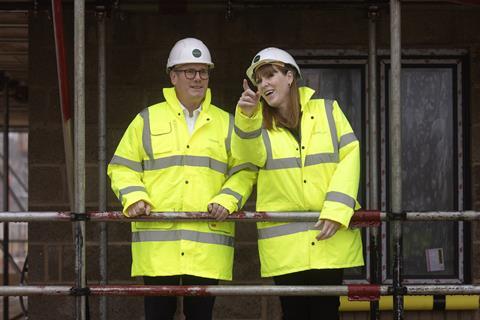Planning reforms welcomed but industry bodies demand support for buyers and money for housing associations
Organisations from across the built environment have welcomed the government’s final version of the National Planning Policy Framework (NPPF).
The confirmed NPPF included a range of changes which were included in the summer’s draft version, including the return of mandatory targets and a new method to calculate them, which has resulted in a 370,000-home national target.

But the government did make some changes after a months-long consultation, including amending its 50% affordable housing requirement for building on the newly defined “grey belt”, which comprises lower quality green belt land.
Developers of grey belt sites will now be expected to deliver 15% more affordable homes than is required in the local housing policy, up to a cap of 50%.
The change reflected consultation demands from industry bodies including the Home Builders Federation (HBF) and Land, Planning and Development Federation, although they had lobbied for a 10% premium.
John Gregory, partner and specialist planning lawyer at national law firm Weightmans, said the government appeared to have “listened to concerns that a blanket requirement to provide 50% affordable housing on all of these sites may have made many of them unviable”.
Paul Wakefield, legal planning partner at law firm, Shakespeare Martineau, said the change would “provide for the delivery of more affordable housing whilst simultaneously reflecting the variance in viability that applies across the country as part of any housebuilding on the green belt”.
Neil Jefferson, chief executive at the HBF, welcomed the NPPF but said “further policy interventions are needed” to meet the government’s ambition to build 1.5m homes in this parliament.
“Demand for new homes is supressed by a lack of affordable mortgage lending and support for first-time buyers in particular is desperately needed,” he said.
“We also need to release the tens of thousands of unsold affordable homes provided by house builders as part of their planning permissions, that cash-strapped Housing Associations are not able to currently acquire.”
>> Read more: NPPF: Government drops 50% affordable housing requirement for grey belt sites
Jefferson said additional planning capacity and a solution to the nutrient neutrality issues were also necessary.
Megan Hinch, senior policy and practice lead on planning for Chartered Institute of Housing welcomed the changes but said planning reform alone “won’t solve the housing crisis”, emphasisng the need for “signfiicant investment in the Spending Review”.
This was echoed by others in the social housing sector.
Ian McDermott, chief executive of Peabody, said the NPPF was a “step in the right direction” for housing but that if the government was going to scale up social housing construction, it needed to put together “a package of measures to help rebuild stability and financial capacity in councils and housing associations”.
Platform Housing Group’s group chief executive, Elizabeth Froude, said she was “heartened” that dealing with the housing crisis was being prioritised by the government.
“Unfortunately, there has been no mention of setting any increased need for more affordable housing on greenbelt land; this is clearly very disappointing for housing associations as it will prevent increased levels of new affordable homes being built,” she said.
“There was also no acknowledgement of the need to support the skills agenda in the construction industry; nurturing and developing homegrown skills is an absolutely critical part of our ability to keep on building for the long term.”
“However, planning reform alone won’t solve the housing crisis—we also need significant investment in the Spending Review to help the sector meet the government’s 1.5 million homes target.”
Jonathan Parker, development director at Pagabo, raised concerns that viability guidance wasn’t expected until the spring, creating “a clear risk of progress being stunted in the short-term”.
“Especially with the viability gap tending to be bigger around affordable housing, and new approaches to how its provision will come forward based on more localised needs under the new NPPF, it’s hard to see how effective appraisals can be run until that guidance is in place, which will likely cause delays in bringing sites forward,” he said.
Sarah Hamilton-Foyn, executive director of planning at Pegasus Group, said: “We should be concerned that a number of local plans have been brought forward at pace this year to avoid the need to align with the higher housing targets laid bare today. The softening of the transition arrangements, allowing for an extra two months, will not help this issue either and will enable more local authorities to pursue their plans based on the current Standard Method.”
Iain Painting, planning director at Stantec, said that for changes to have real impact there would need to be “effective and up-to-date local plans which provide sufficiently detailed allocations for commercial and infrastructure needs as well as housing”, as well as “well-resourced planning departments able to cope with the likely influx of applications”
RIBA president, Muyiwa Oki, said the revisions to the NPPF “offer a promising path forward”, while urging a “greater involvement of architects and greater resource for local planning authorities”.
“Most importantly, this cannot become a solely numbers-driven exercise. In our cities, towns and countryside people deserve high-quality, well-designed homes that meet their needs and stand the test of time,” he said.




























No comments yet